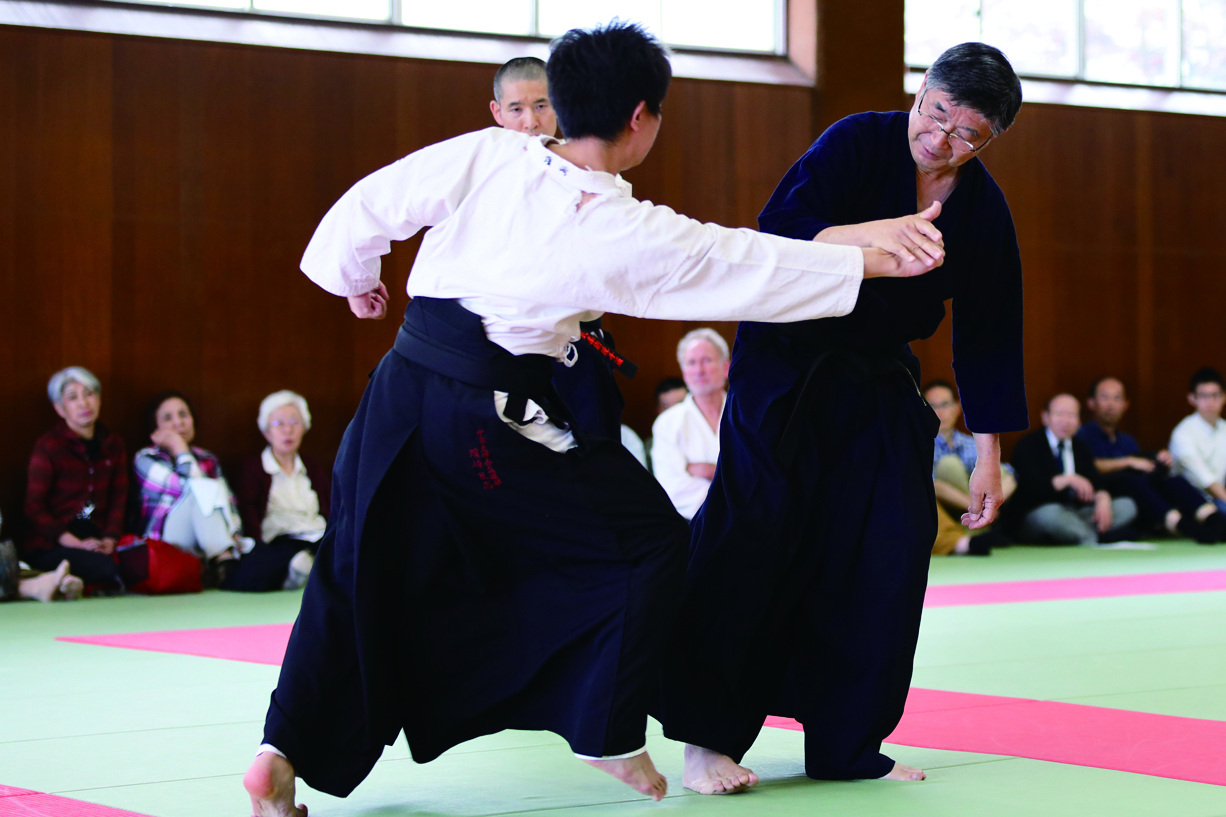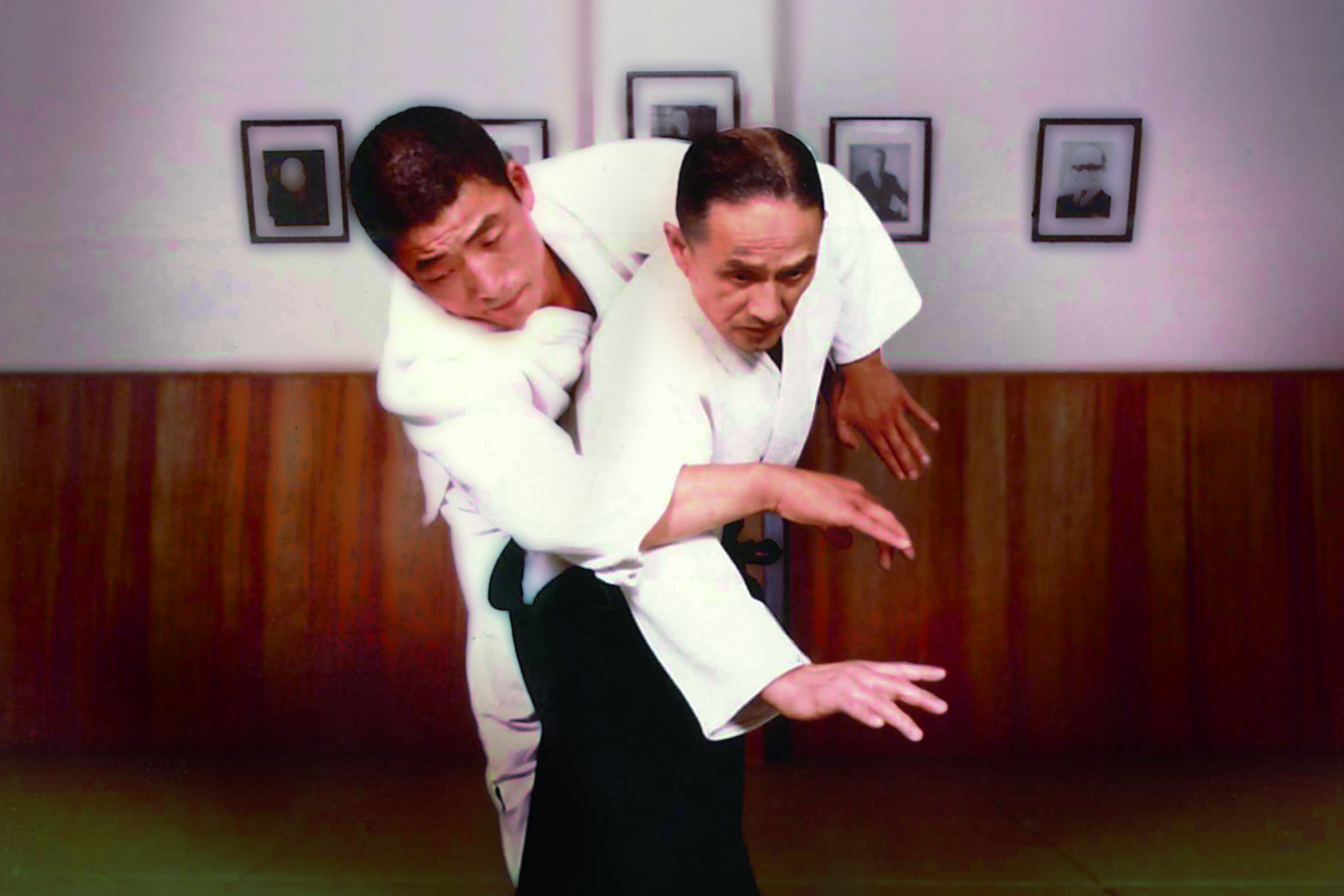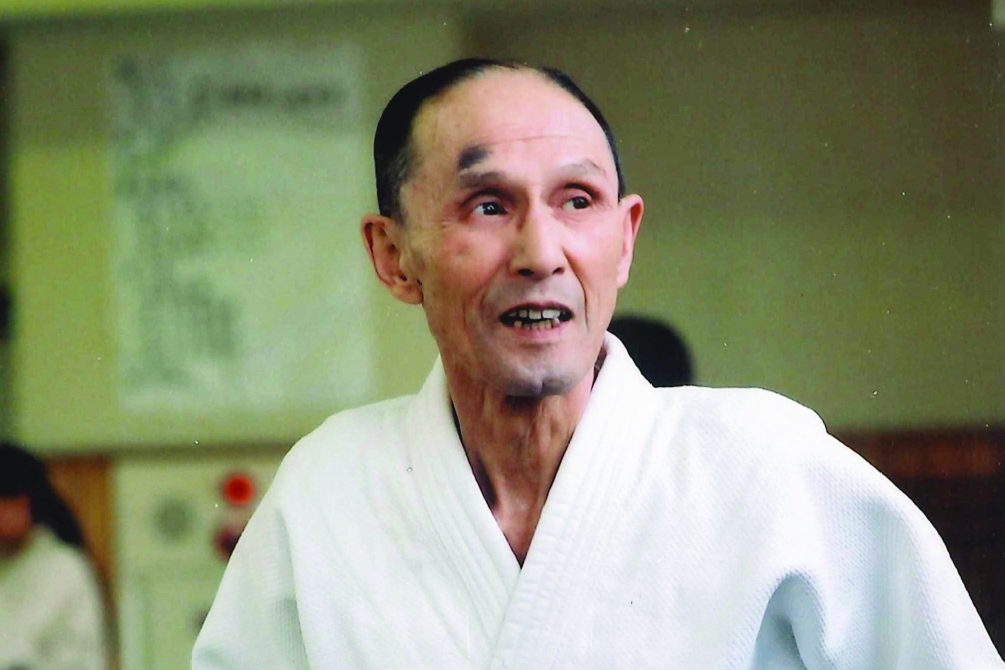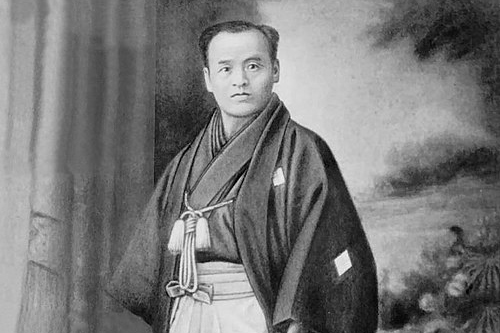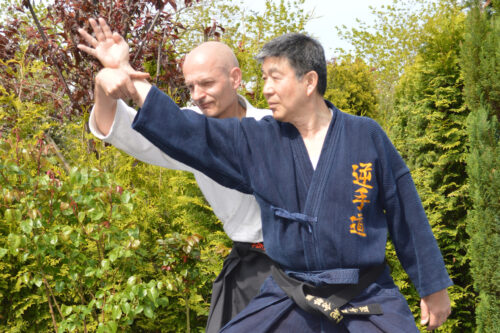» At the starting of AIKI Web Course
【AIKI Web Course Part 2】
Lesson 10 - Application of Force Equilibrium method
AIKI techniques based on the Force Equilibrium method are very effective against striking attack. This is because as soon as you touch the opponent’s attacking arm, you can put the opponent’s body into a rigid state and collapse it down.
Block the attacking arm by “Non-detachable Hand”(AIKI Uke)
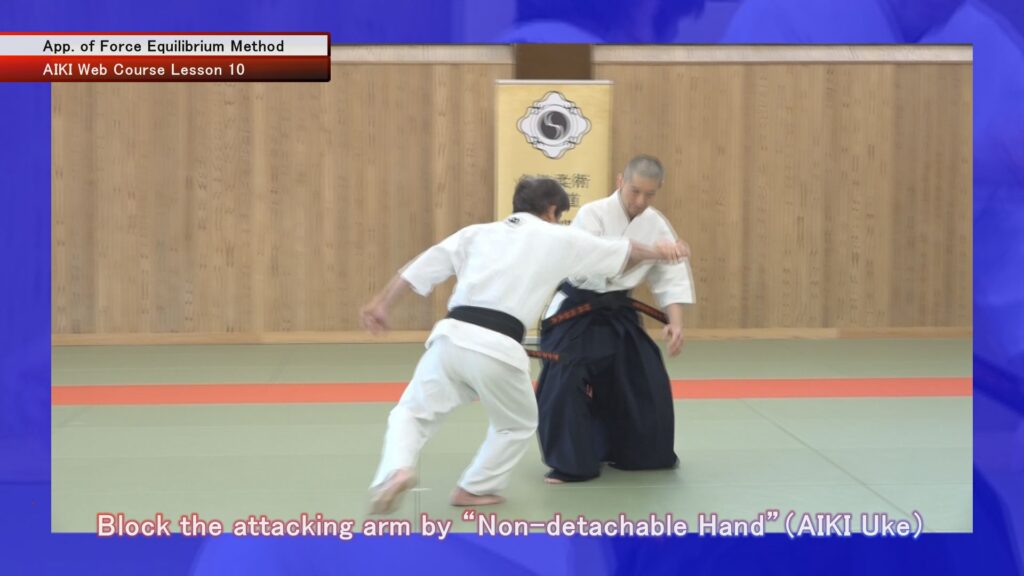
A and B stand by face to face.
A…Defender
B…Attacker
a・B attacks A by Migi Jyodan Tsuki, right upper poking.
b・A block’s B’s right arm at around his wrist with right hand creating Force Equilibrium state.
c・Carefully without breaking that Force Equilibrium state, A turns his body counterclockwise.
d・B has to follow A’s motion because his right arm is attached to A’s hand and cannot release it. Finally B will be thrown away.
The most important point in this AIKI-Uke is how to create the Force Equilibrium state. Of course. You can’t do it in a sudden. Follow the steps outlined below step by step.
1 Create Force Equilibrium state in a static state
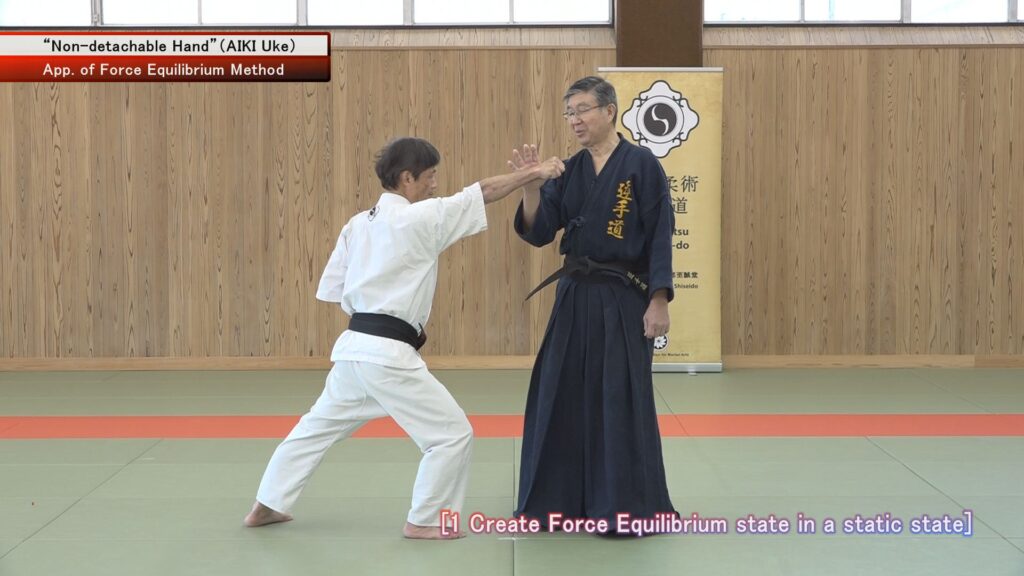
First, practice creating a Force Equilibrium state in a static state. Ask the opponent to perform a right-hand upper poking and stop when the arm is fully extended.
Take your position where you locate inside your opponent’s stance and place your right hand palm on the opponent’s right wrist so that it touches very lightly to create a Force Equilibrium state.
First of all, please feel and remember the Force Equilibrium state against the poking posture.
2 Move the opponent with keeping the Force Equilibrium state
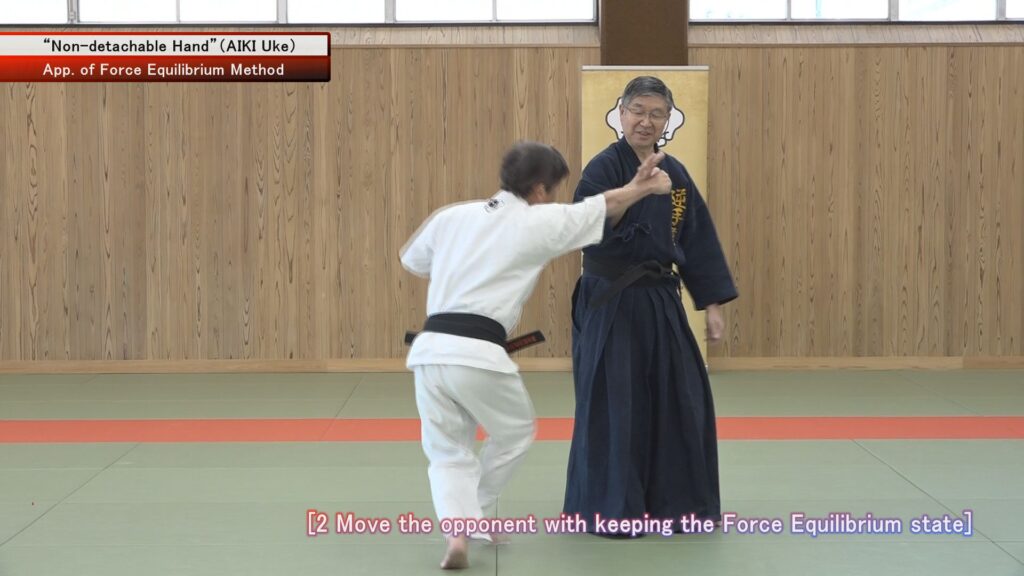
Once you have created the Force Equilibrium state, next rotate your body counterclockwise without breaking that state. Move your body without applying any extra force to your right hand.
If the Force Equilibrium state is not broken, the opponent cannot release his wrist and remains connected to your hand, i.e. to follow your movement.
After rotating your body somehow, then you just move down your right hand to collapse the opponent to the floor.
3 Let’s create Force Equilibrium state in action
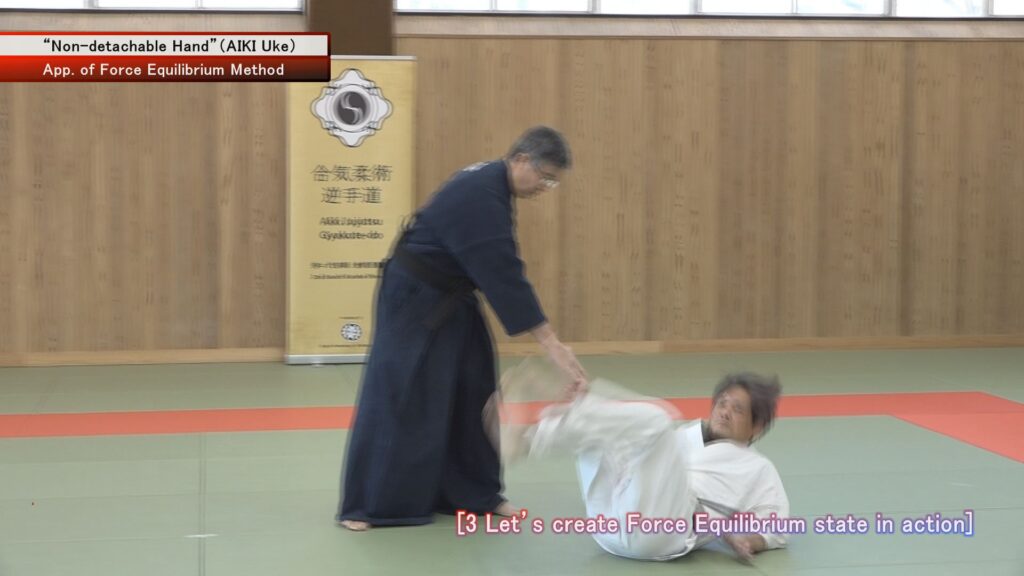
As a finishing touch, you will be able to do the above while moving.
The faster the opponent’s attack speed, the greater the tolerance for the level of the force that creates Force Equilibrium, and even if you avoid hitting a little harder, you can still create the Force Equilibrium.
Slow down at first and speed up gradually.
Summary of Lesson 10
When the Force Equilibrium state is created, the opponent’s body stiffens, and at the same time, an instinctive action to maintain that state occurs by him.
Therefore, when you move your hand, the opponent will instinctively try to maintain the state and follow your movement.
It’s a really strange phenomenon that the opponent’s wrist sticks tightly to your hand and won’t let go. However, it is a technique that uses the physiological characteristics of humans, and if you understand the principle, it is not a mysterious technique.
Learn AIKI by a Combination of
Videos and Articles!!
» At the starting of AIKI Web Course
with Videos and Free Articles
AIKI Web Course Part 2 24 Lessons
-
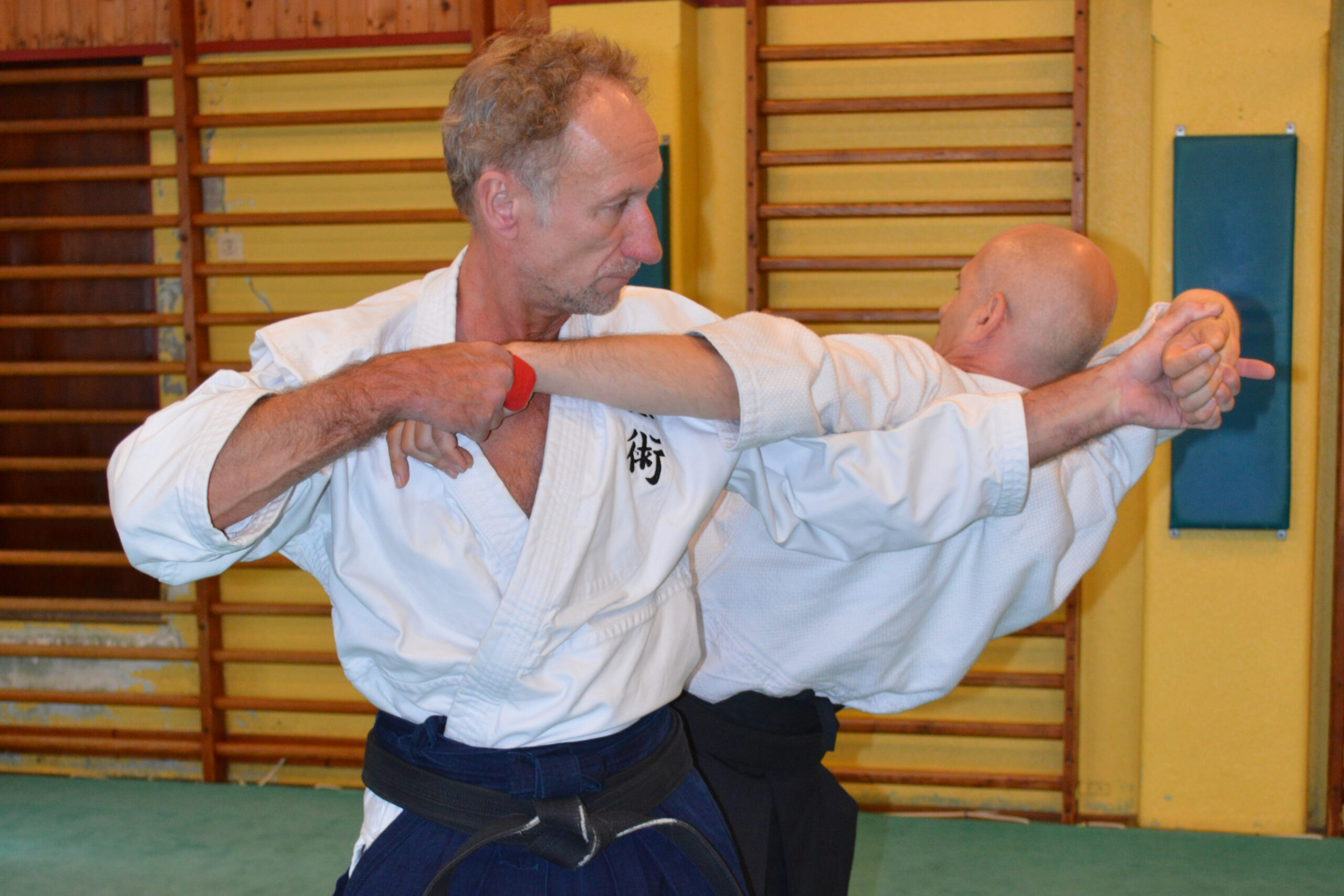
【AIKI JUJUTSU GYAKUTE-DO Series No.5】How you can learn Jujutsu properly
-
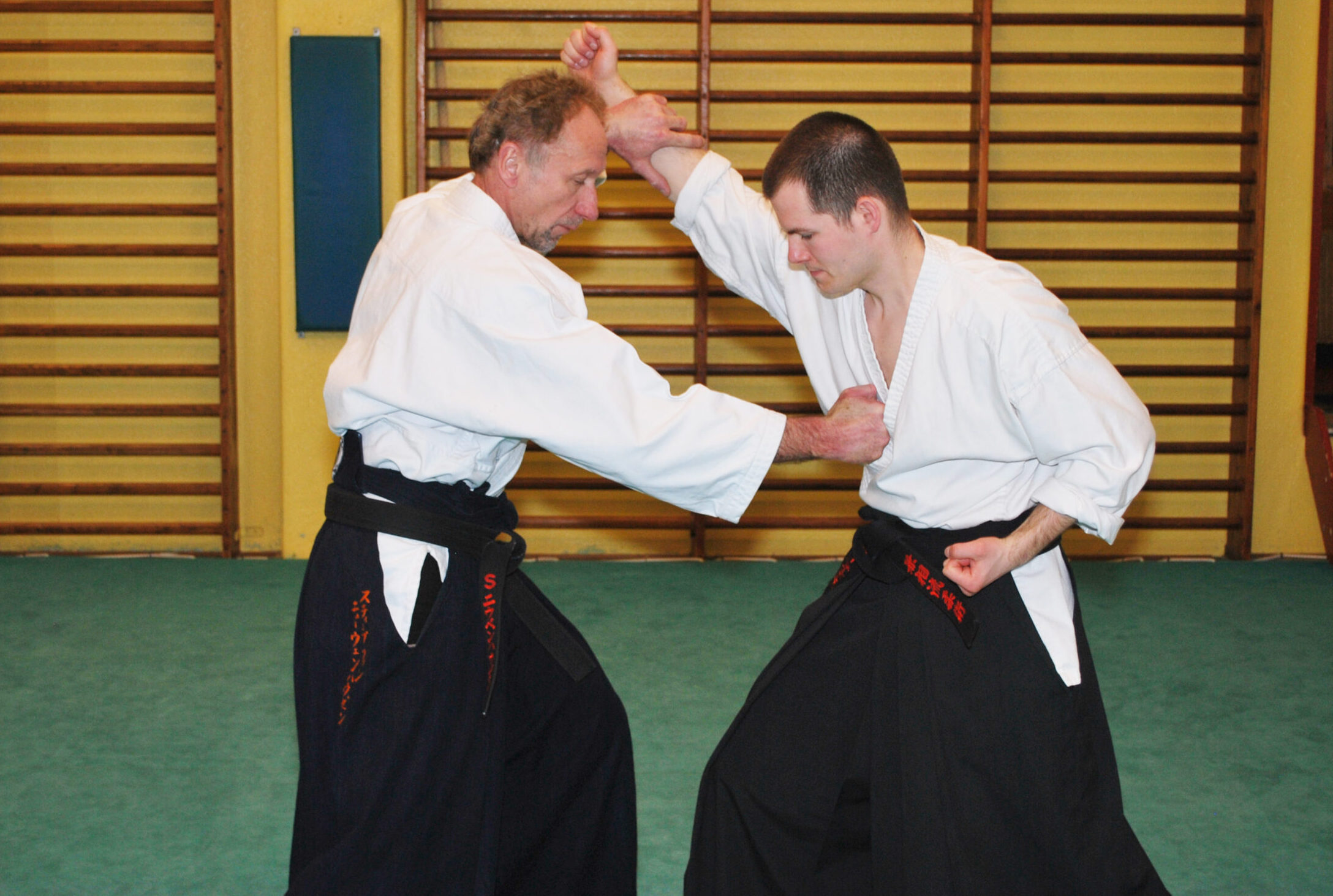
【AIKI JUJUTSU GYAKUTE-DO Series No.4】DAKEN-HO Hit and Kick KATA and AIKI
-
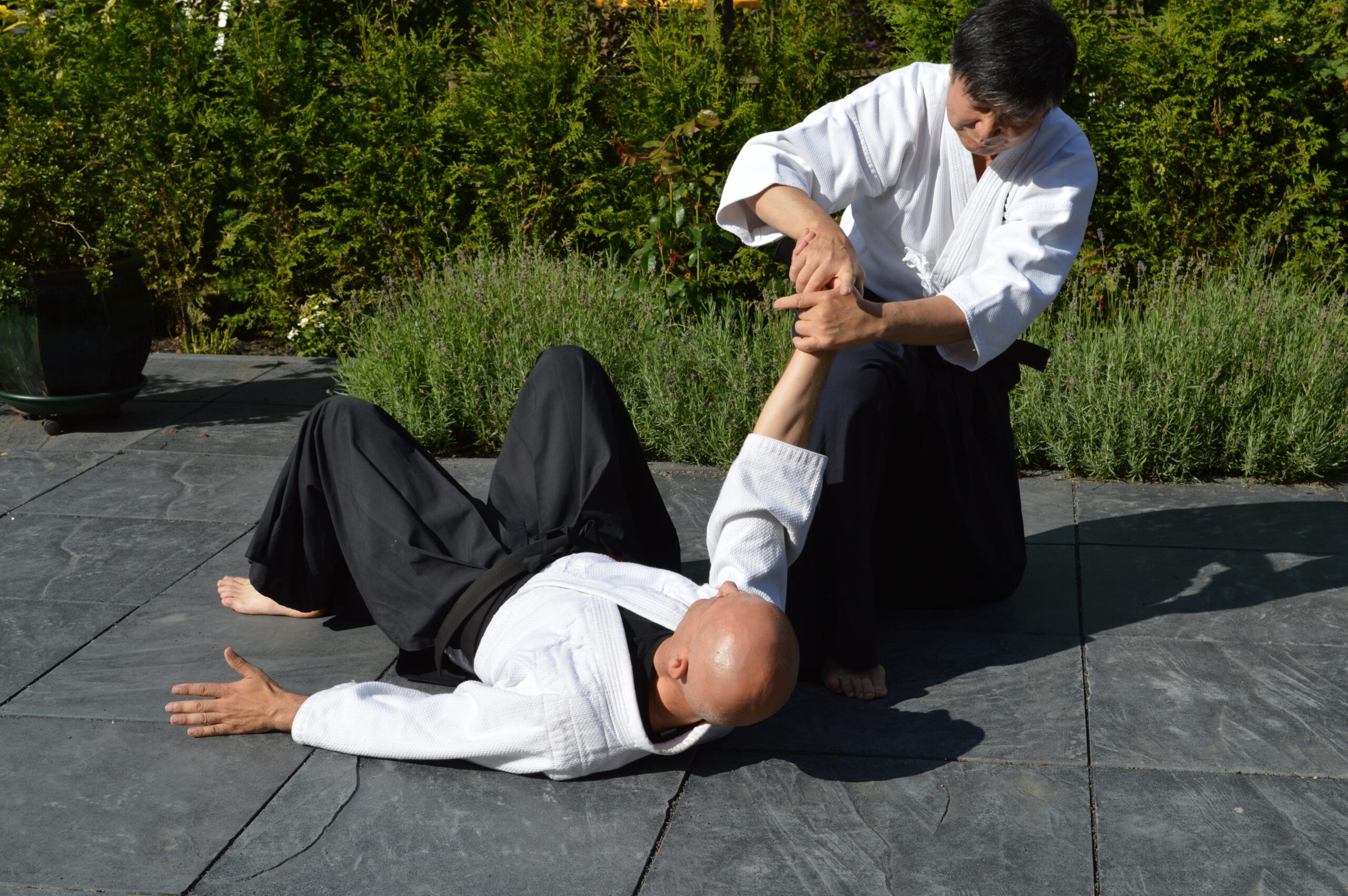
【AIKI JUJUTSU GYAKUTE-DO Series No.3】JUJUTSU WAZA, digest of FUDO
-
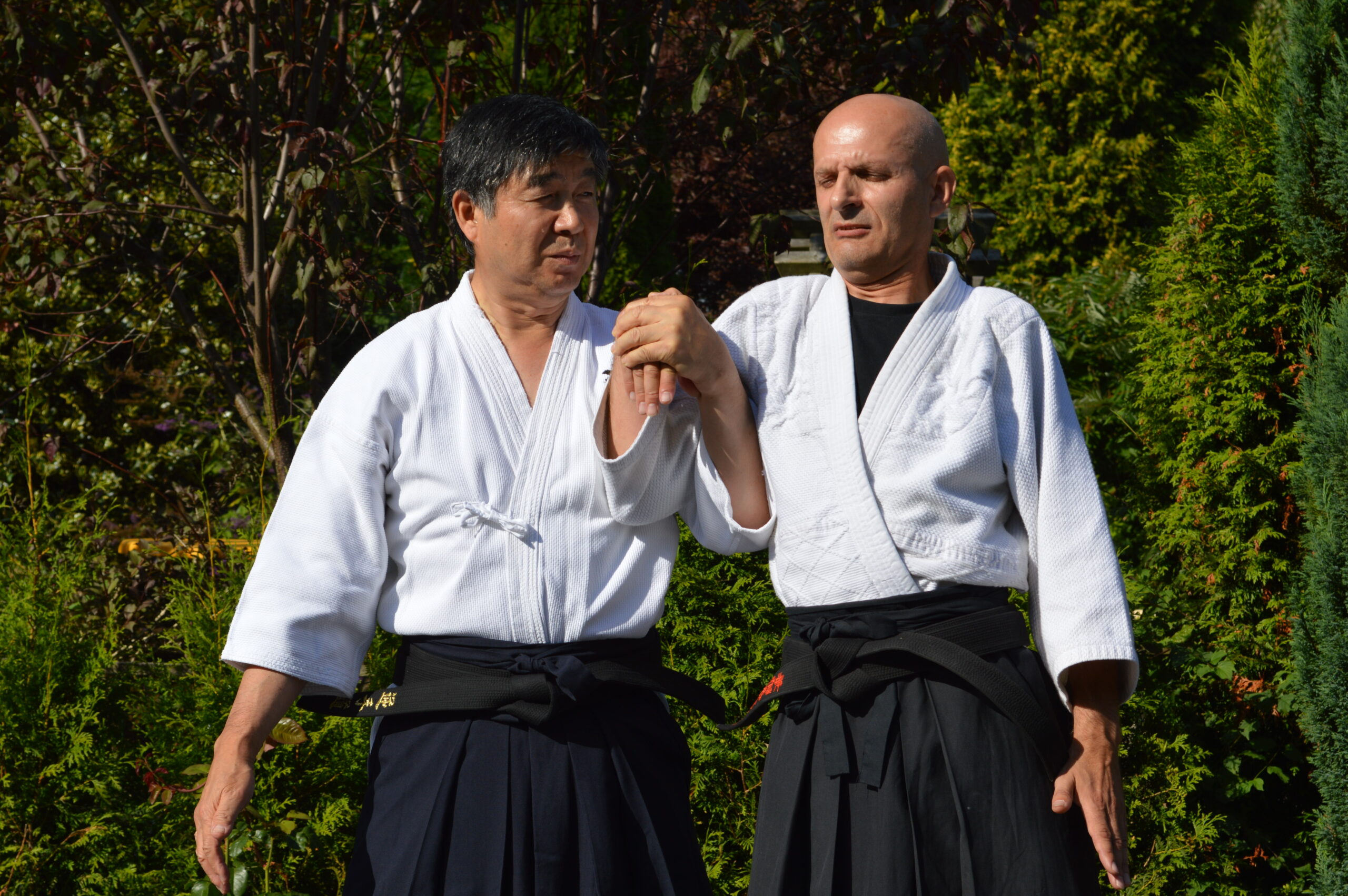
【AIKI JUJUTSU GYAKUTE-DO Series No.2】JUJUTSU WAZA, digest of NUKI, RENKO and NAGE
-
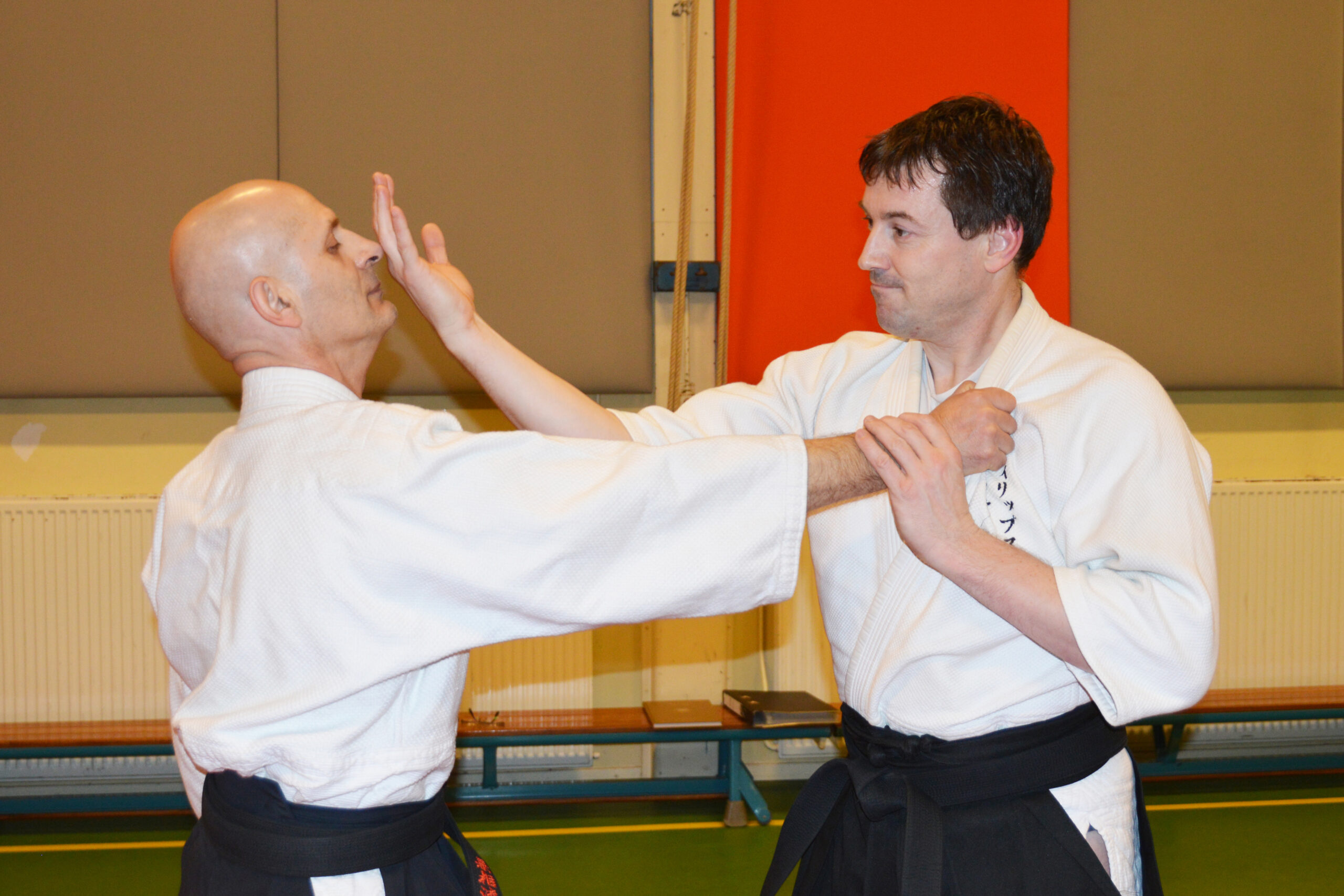
【AIKI JUJUTSU GYAKUTE-DO Series No.1】About GYAKUTE-DO and the digest of its basic techniques
-
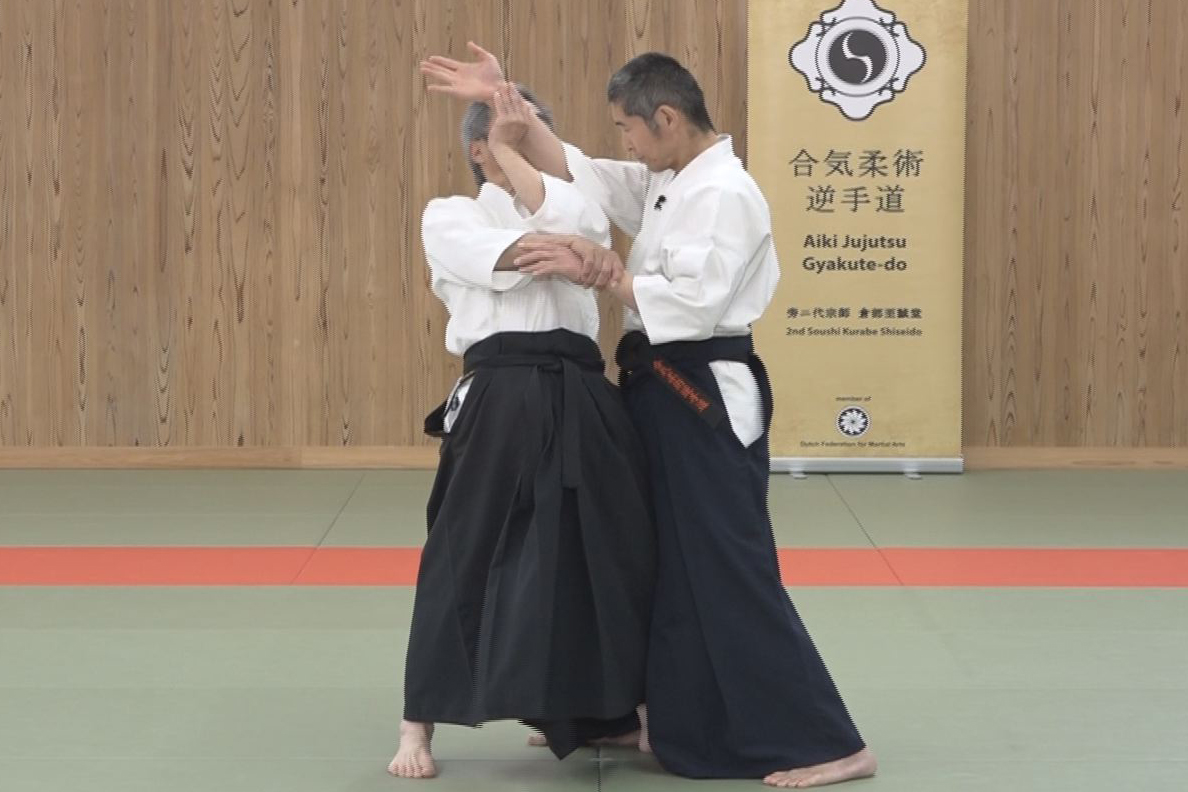
Lesson 24 With Comb. of Different Methods #2
-
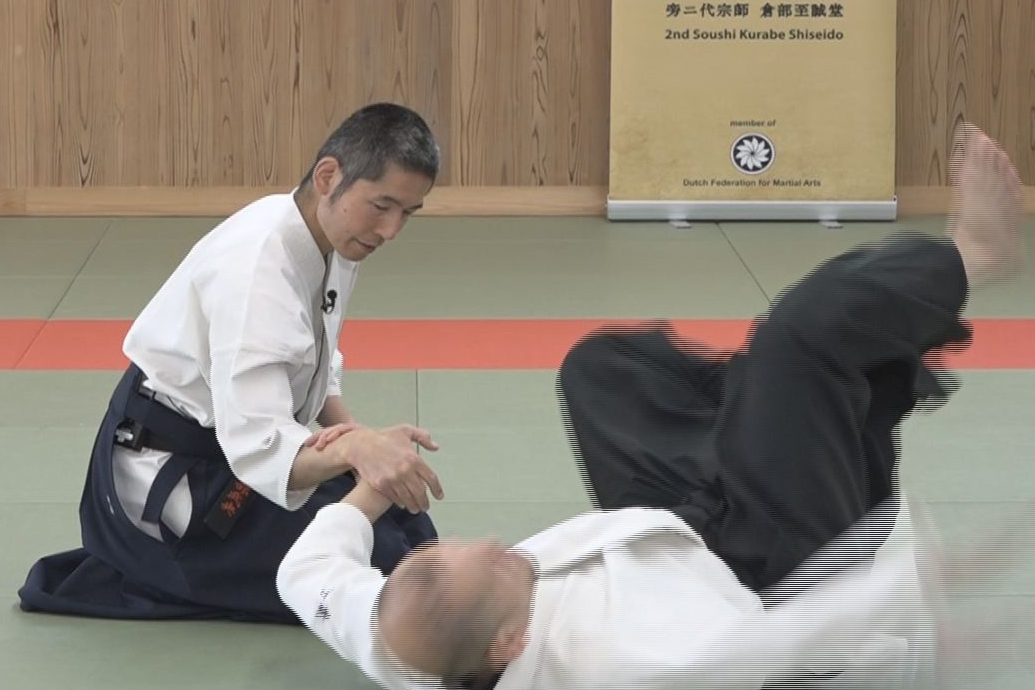
Lesson 23 With Comb. of Different Methods #1
-

Lesson 22 Advanced Tech. using F. E. method #2
-

Lesson 21 Advanced Tech. using F. E. method #1
-
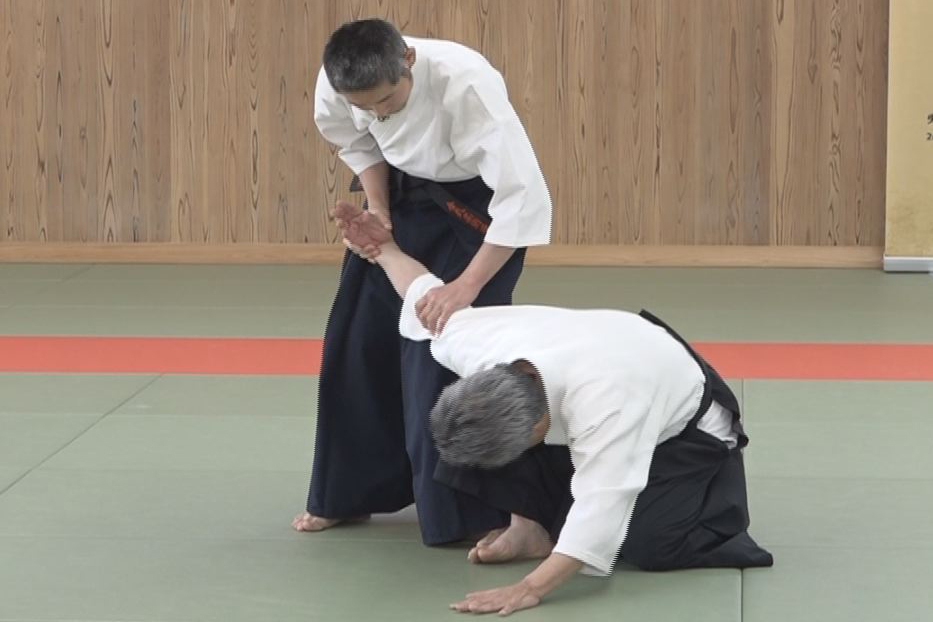
Lesson 20 Advanced tech. using T. F. T. #2
-
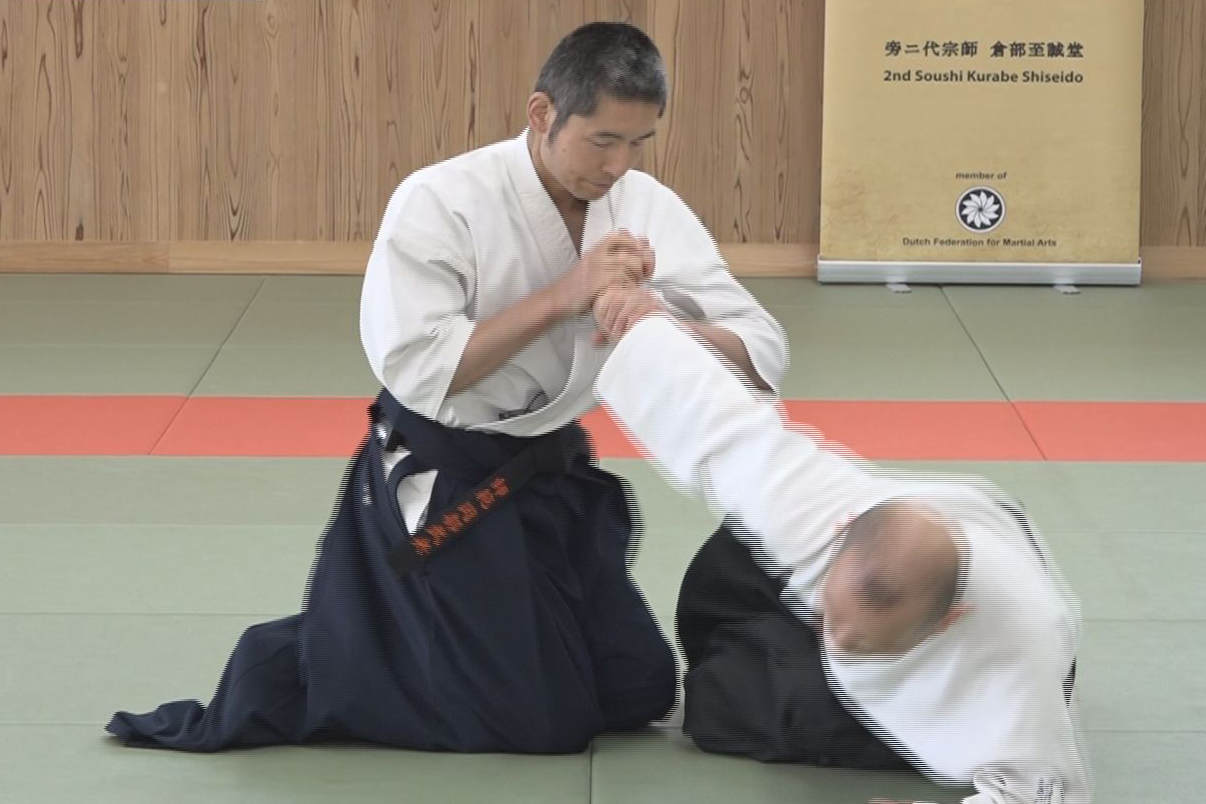
Lesson 19 Advanced tech. using T. F. T. #1
-
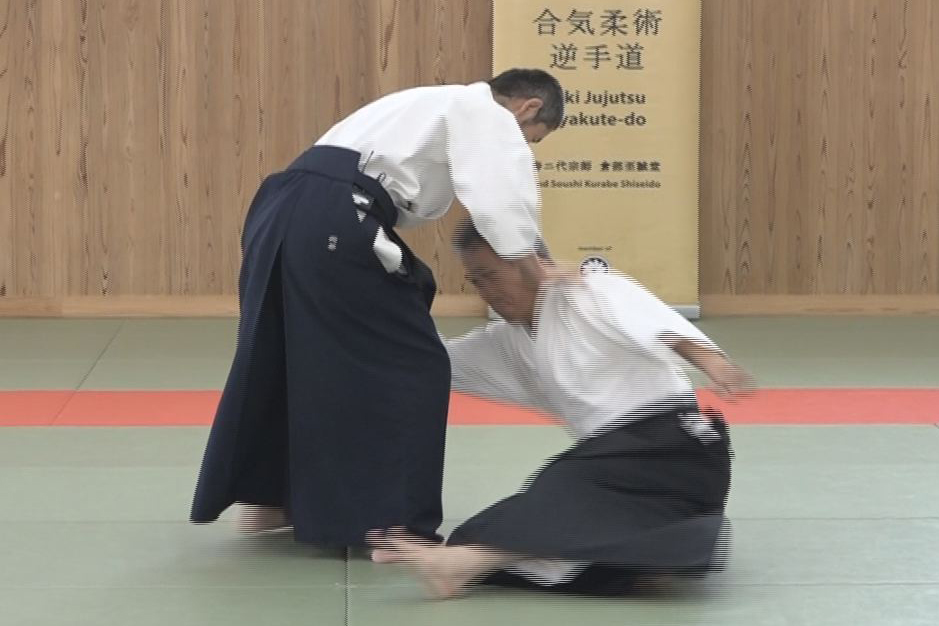
Lesson 18 Advanced tech. using AIKI Contact #2
-
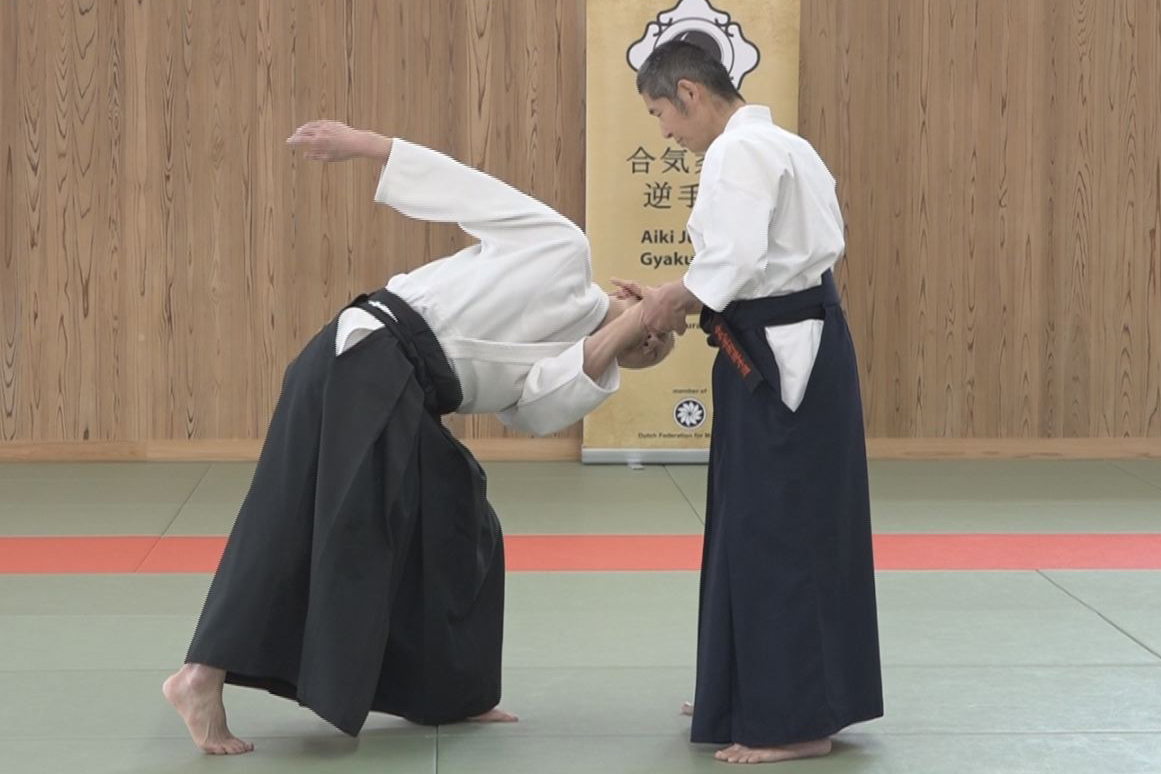
Lesson 17 Advanced tech. using AIKI Contact #1
-
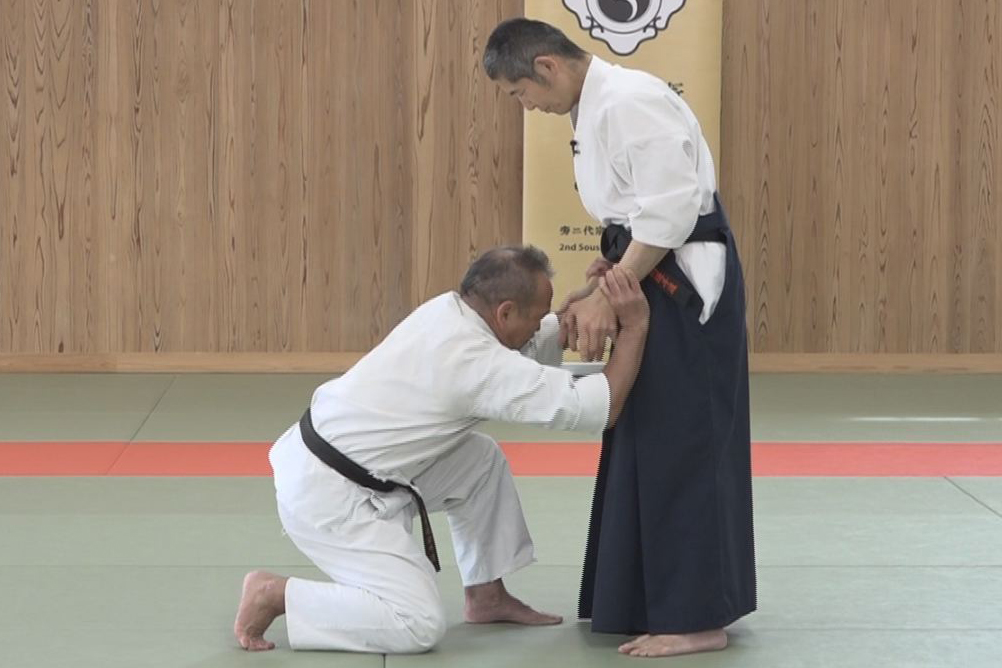
Lesson 16 Advanced tech. by Undetectable F.T. #2
-
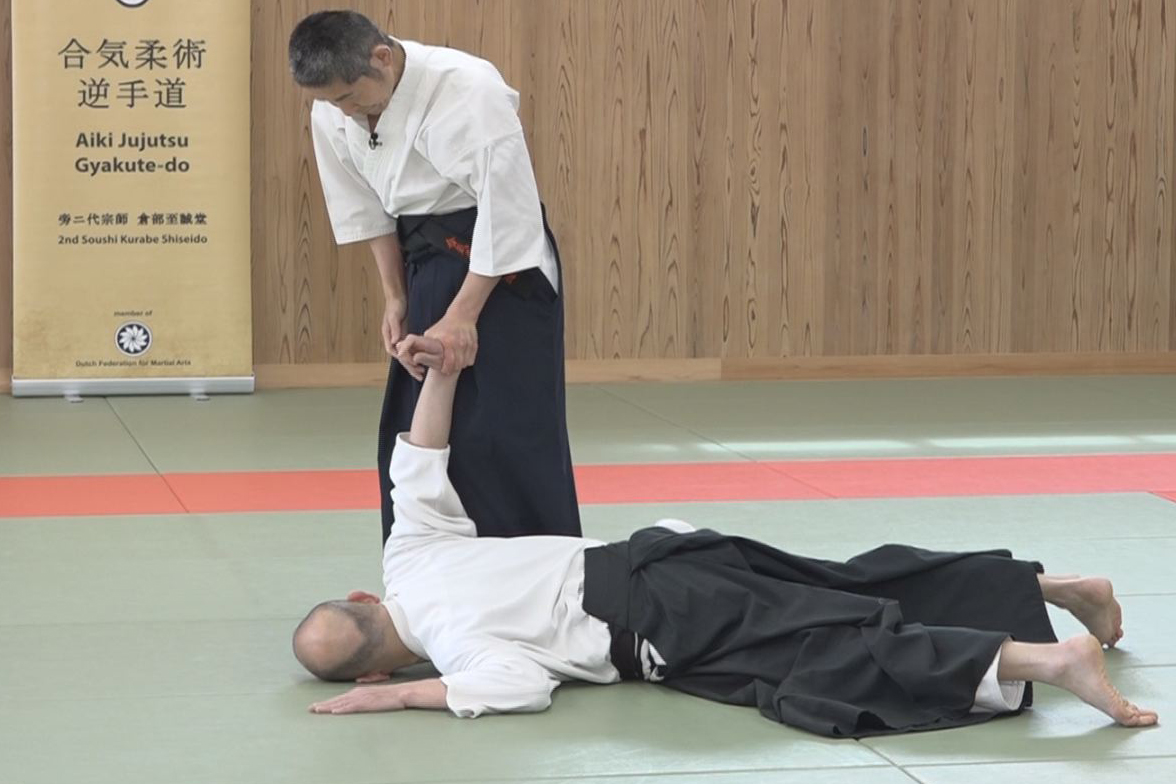
Lesson 15 - Advanced tech. by Undetectable F. T. #1
-
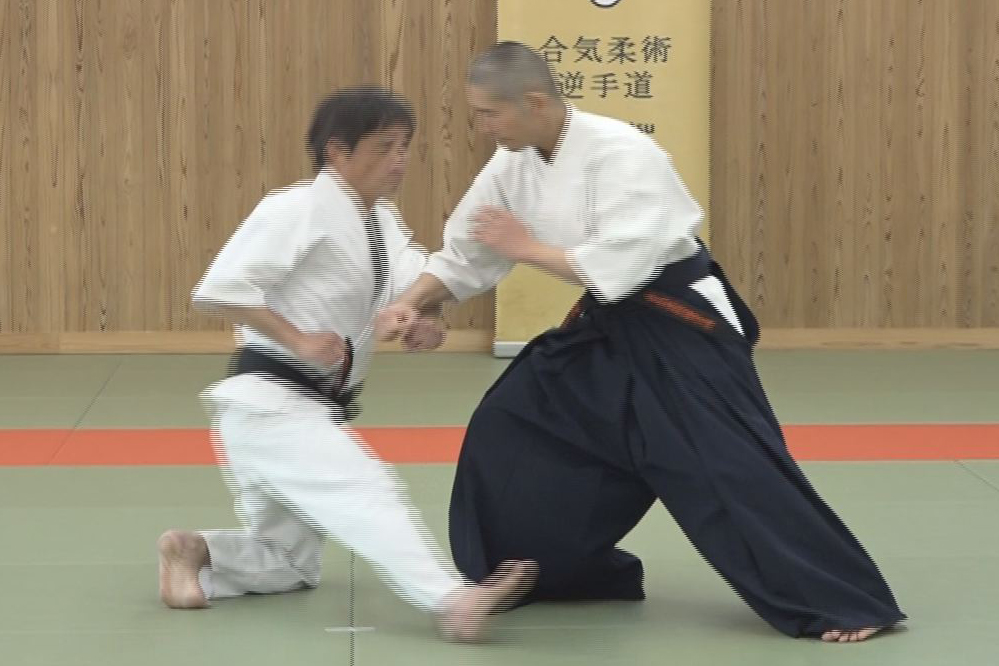
Lesson 14 - Advanced tech. by the Waving method #2
-
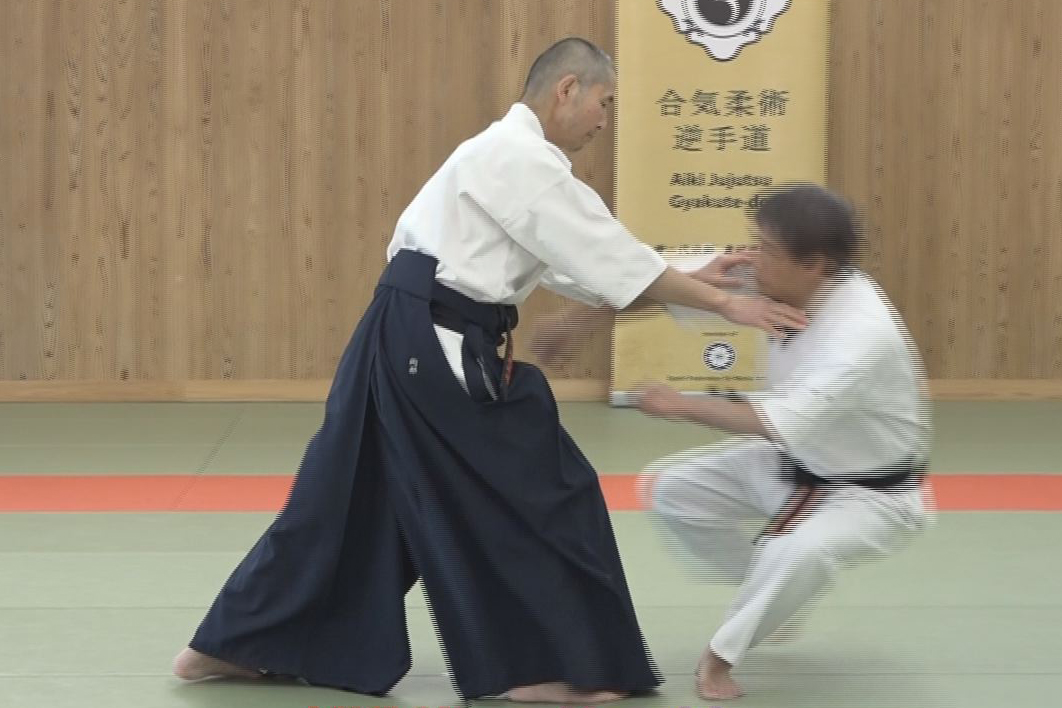
Lesson 13 - Advanced tech. by the Waving method #1
-
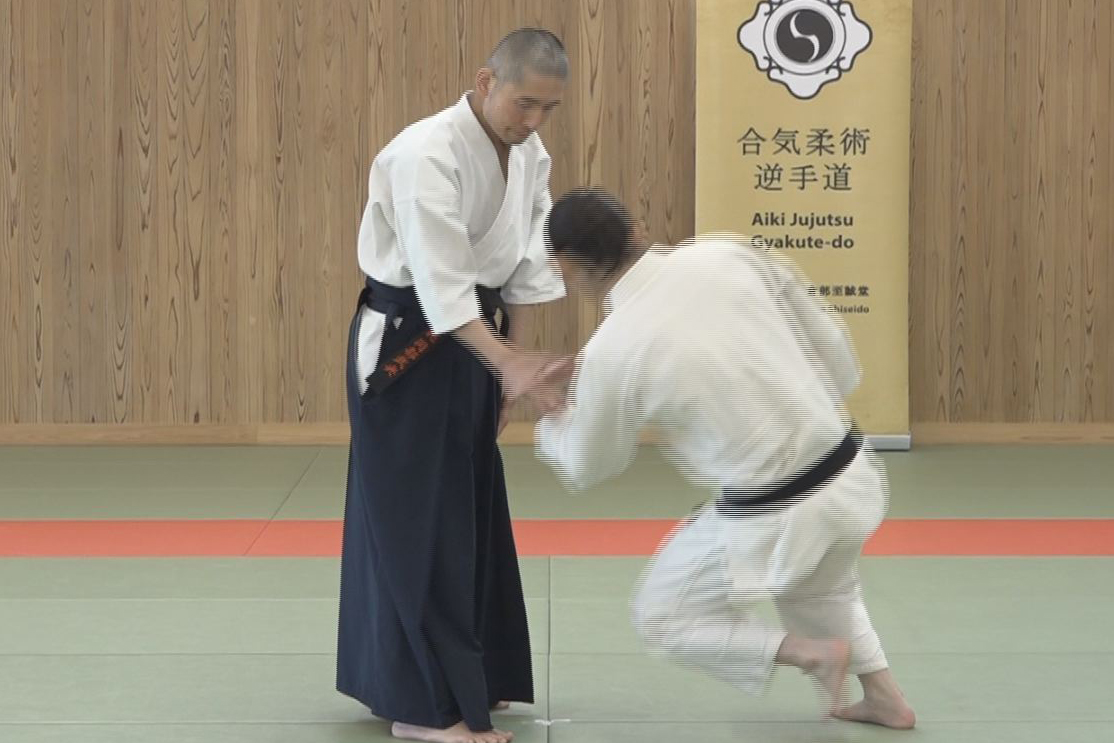
Lesson 12 - Gyaku-te by not Using Force nor AIKI
-
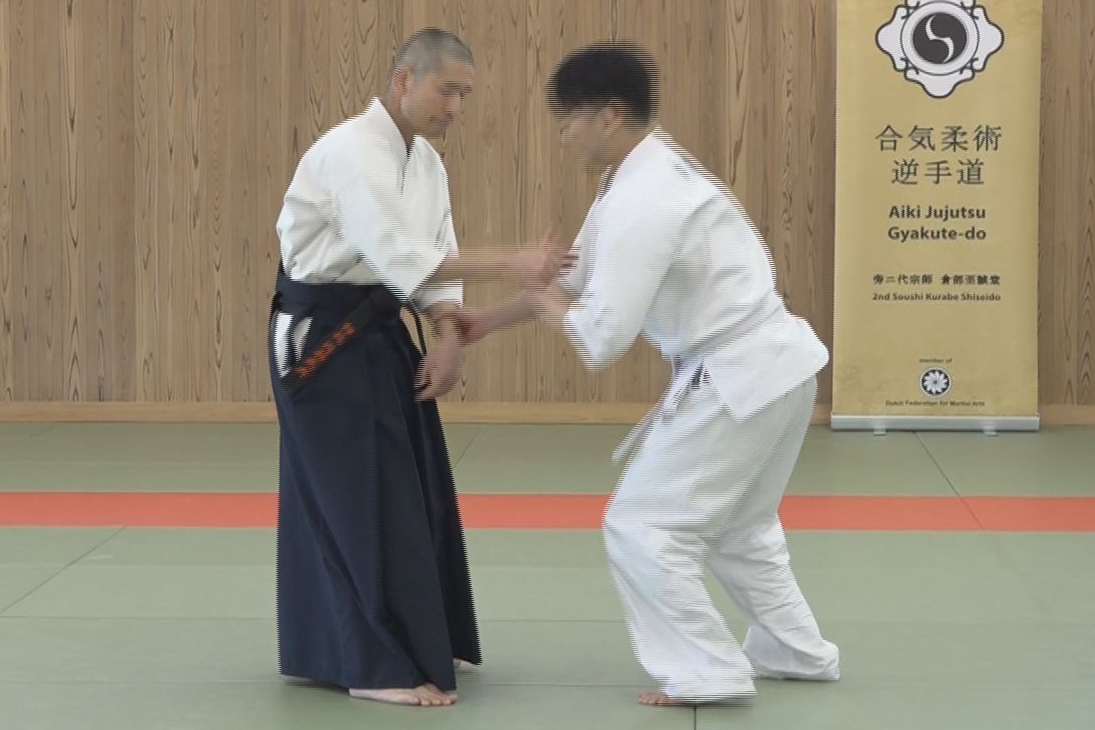
Lesson 11 - Gyaku-te Realized by the AIKI Method
-
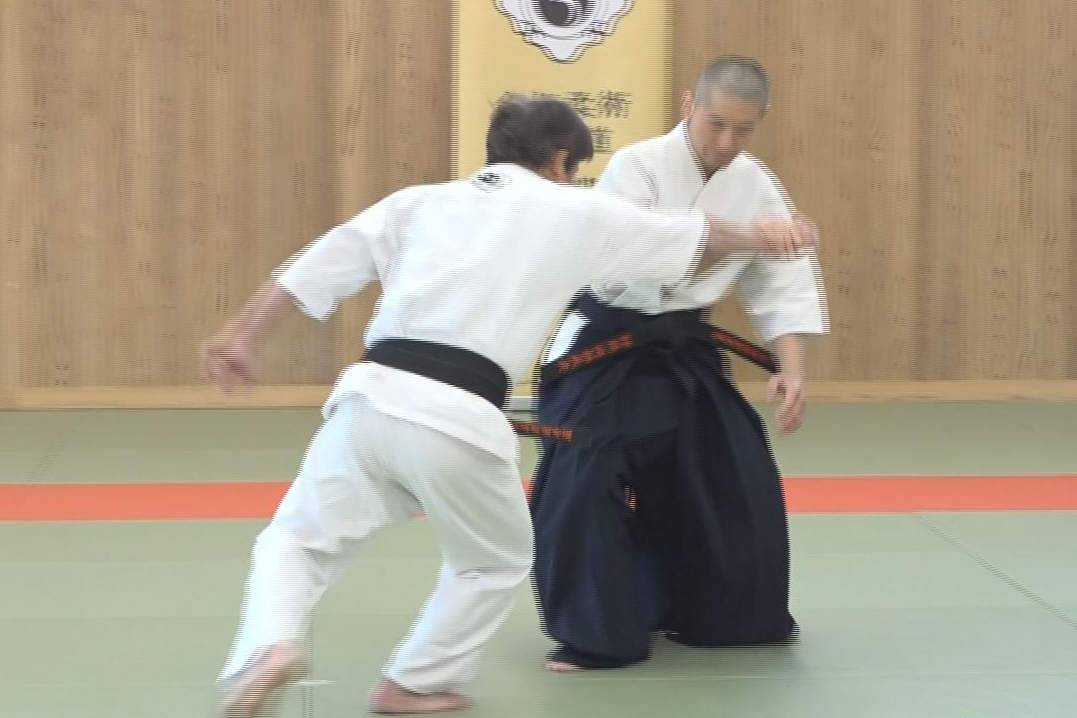
Lesson 10 - Application of Force Equilibrium method
-
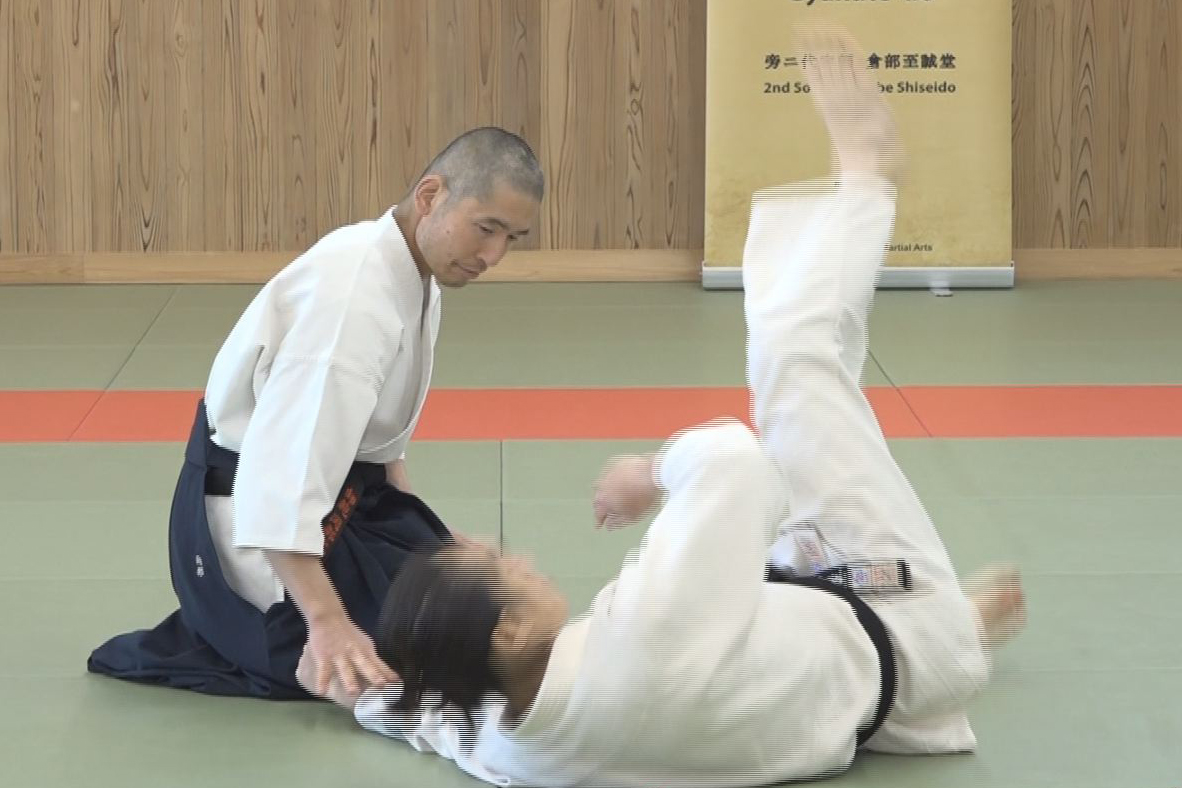
Lesson 9 - Force Equilibrium
-
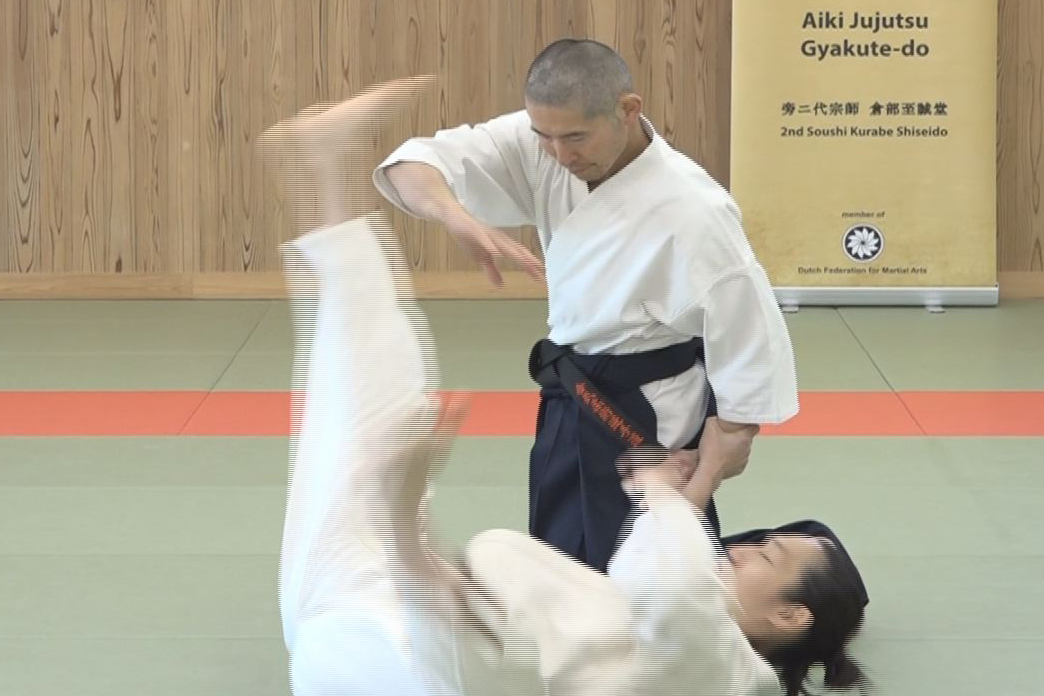
Lesson 8 - Application of Targeted Force Transfer
-
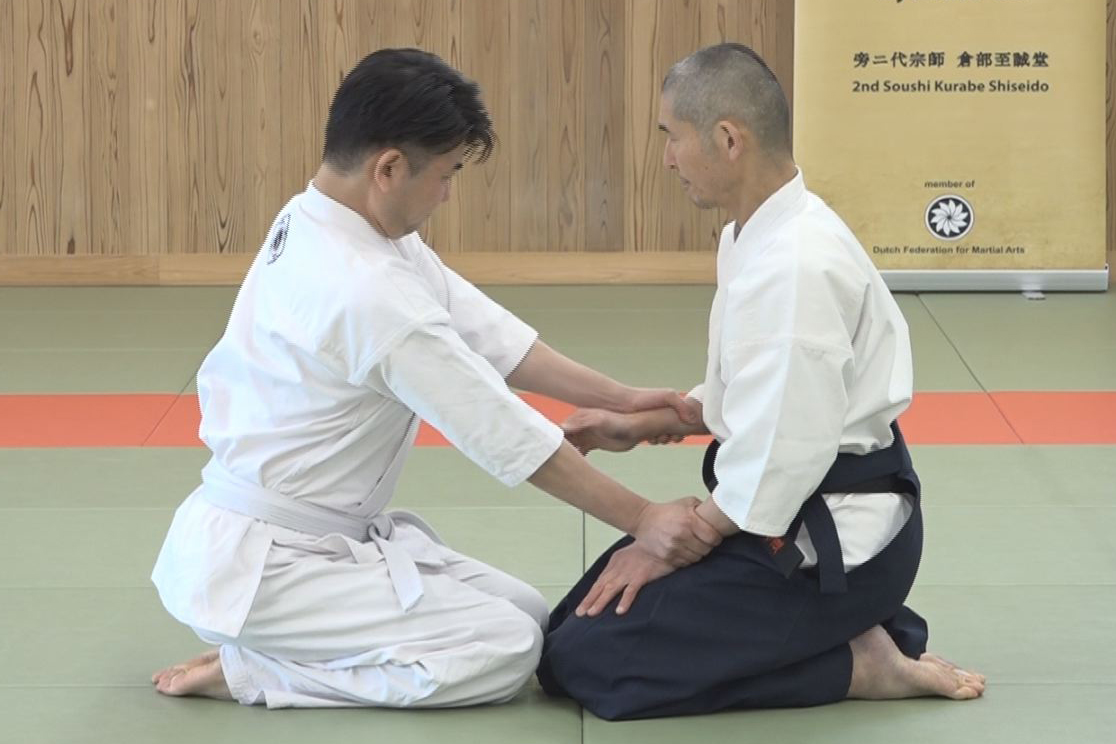
Lesson 7 - Targeted Force Transfer
-
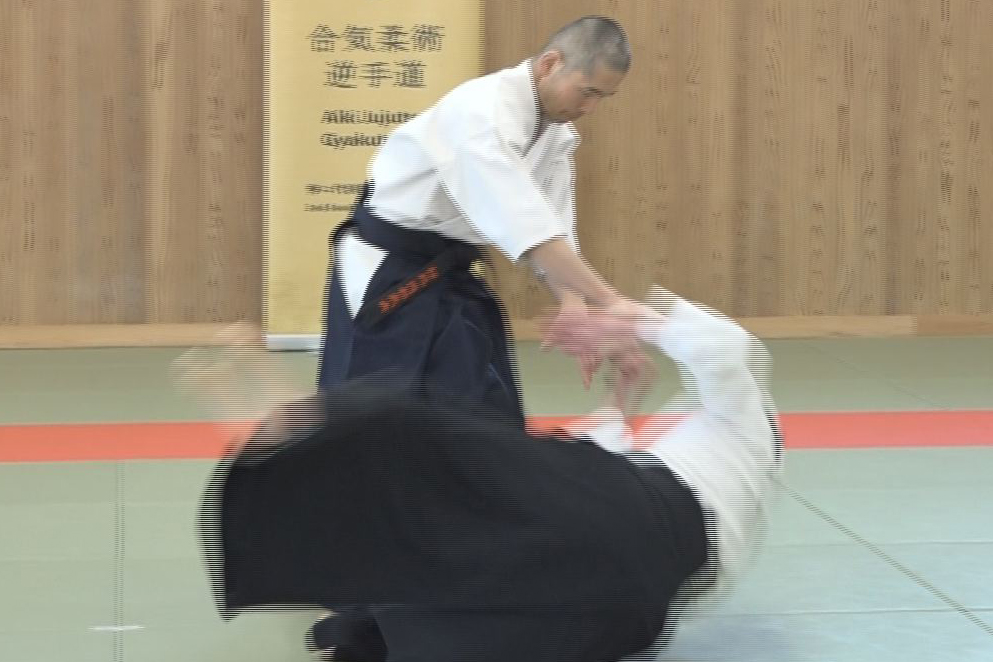
Lesson 6 - Application of AIKI Connection
-
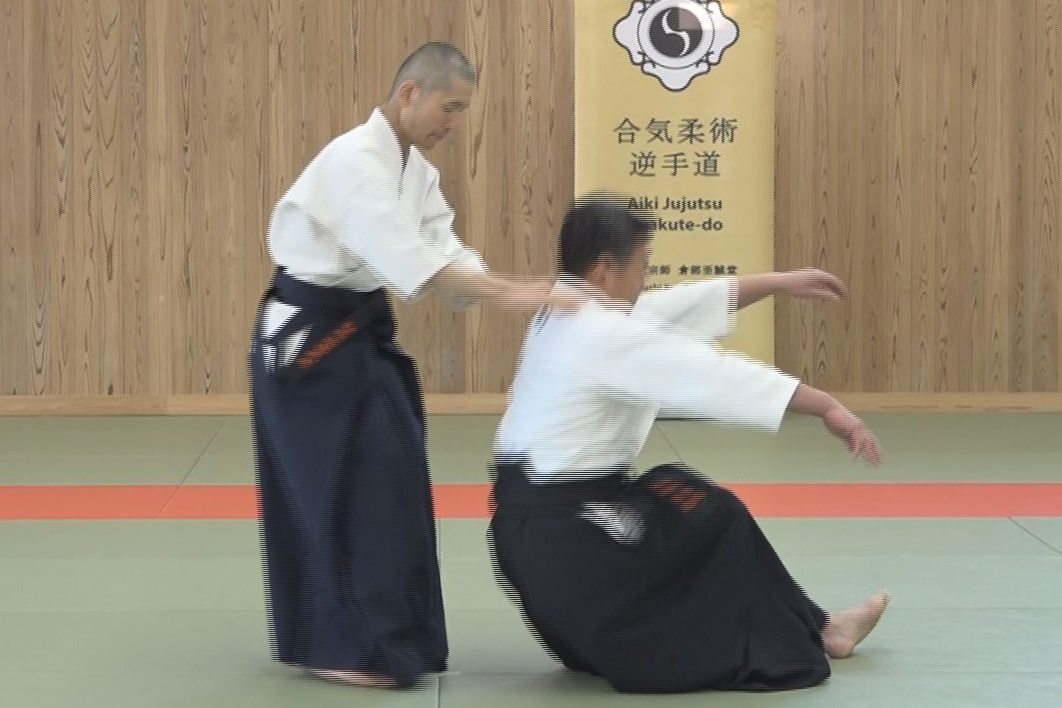
Lesson 5 - AIKI Connection
-
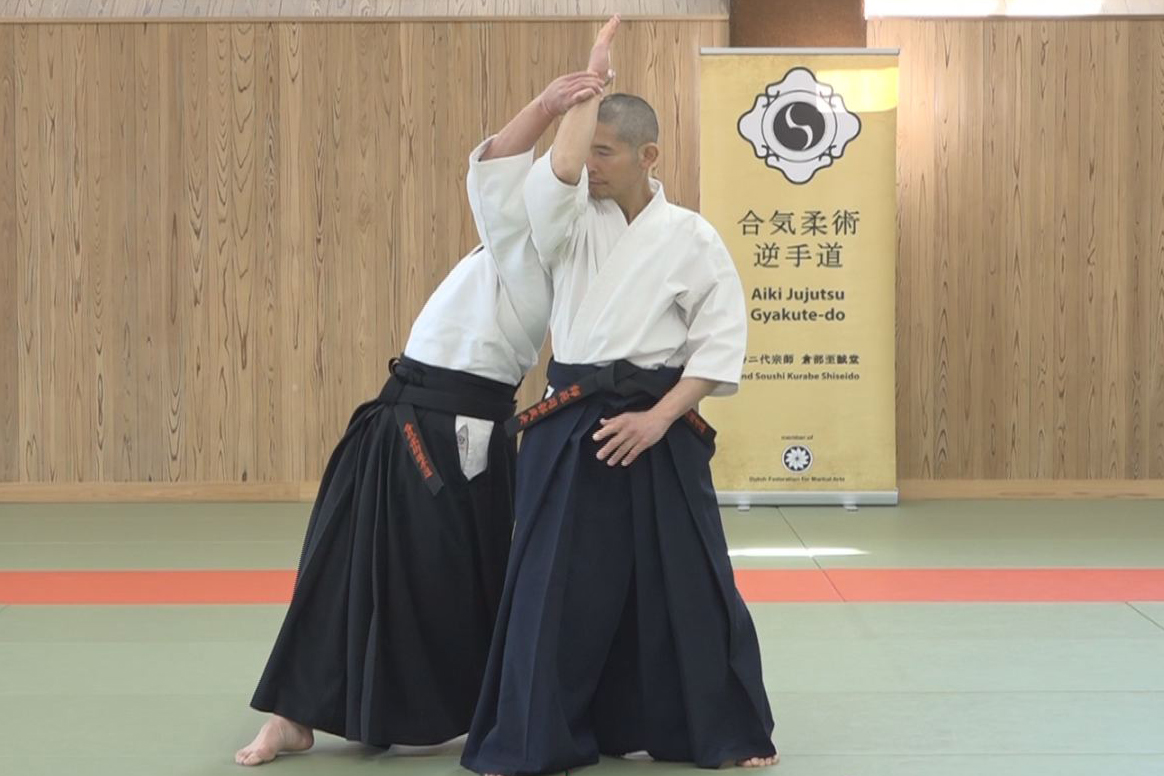
Lesson 4 - Application of Nondetectable Force Transfer
-
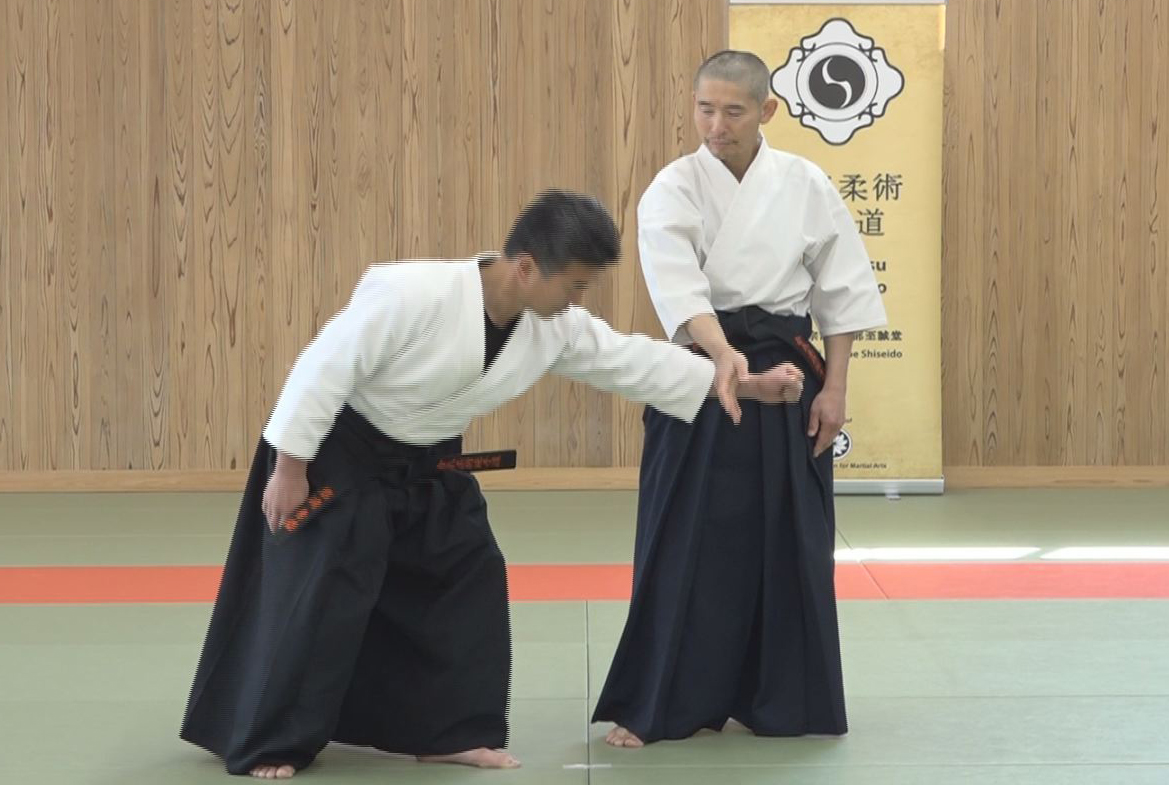
Lesson 3 - Explanation of Undetectable Force Transfer
-
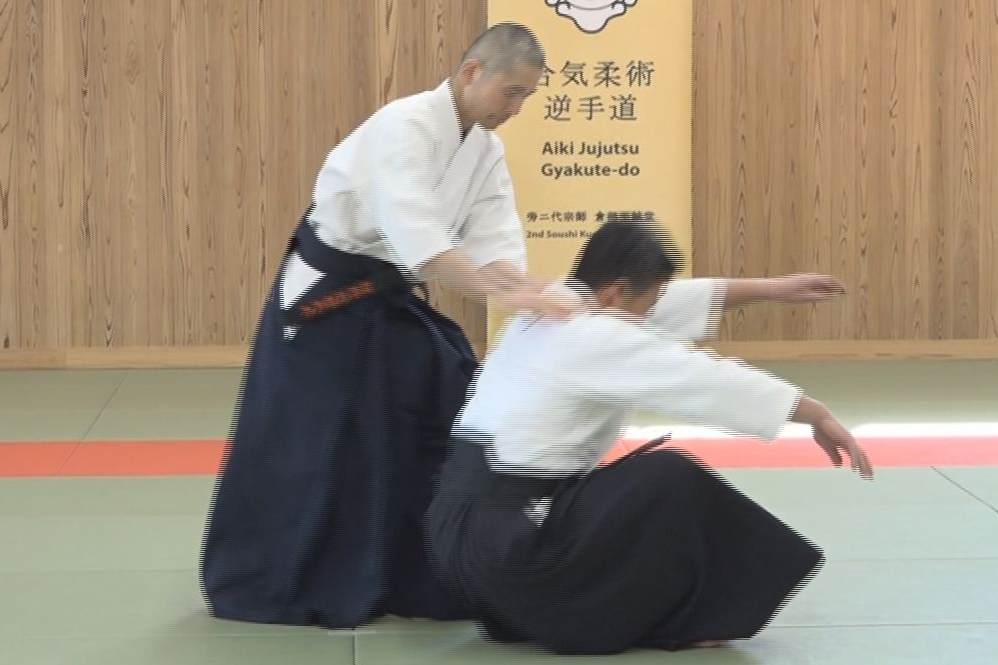
Lesson 2 - Application of Waving Method
-
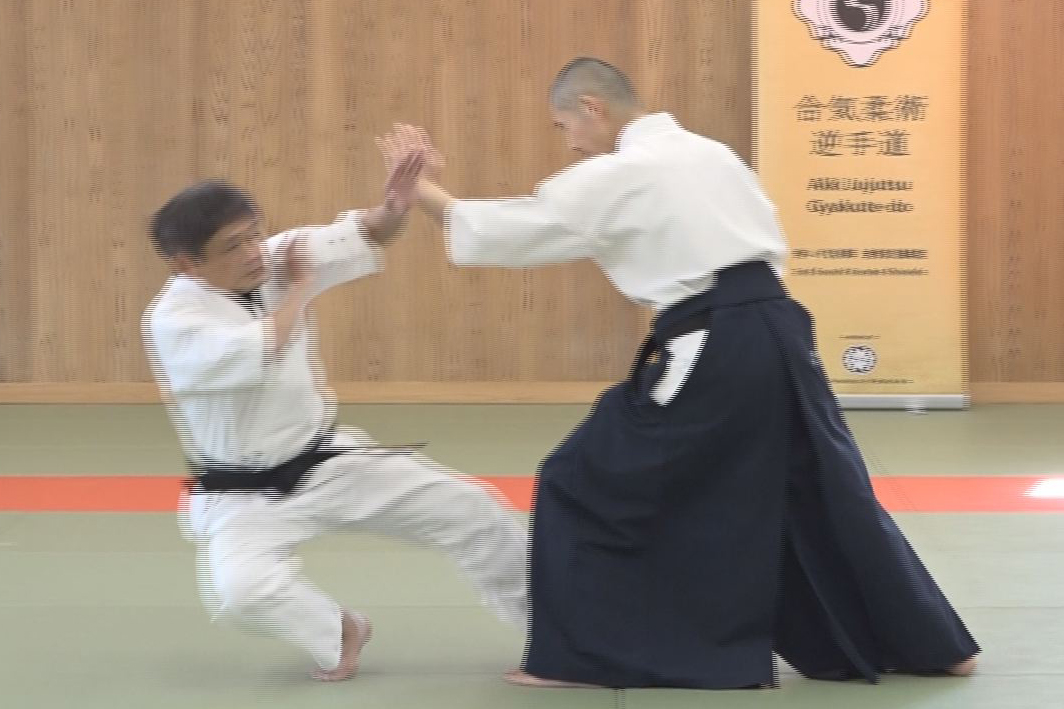
Lesson 1 - The Explanation of Waving Method
-
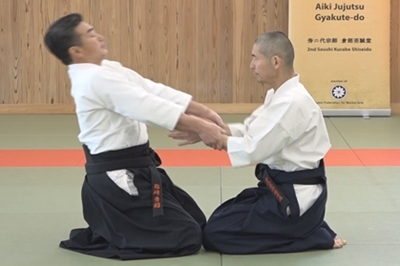
Introduction with video
and Knowledge of AIKI



